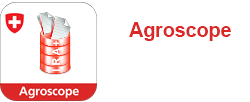The present study investigated the contribution of fresh dung and urine patches and other background areas to the total N2O emissions of a grazed pasture system in Switzerland. For this purpose small-scale chamber measurements were compared to field scale eddy covariance measurement of N2O fluxes. It was found that urine patches are strong hotspots of N2O emissions and contribute a dominant share (about 60%) to the overall pasture emission during grazing periods. A simple up-scaling showed a fair agreement of average emissions observed by the two methods. Shortterm deviations between the methods indicate a strong effect of soil moisture conditions.
Ammann C., Voglmeier K., Jocher M., Menzi H.
Quantification of small scale nitrous oxide emissions and comparison with field-sclae emissions of a rotational grazing system.
In: 3rd International Symposium on Emission of Gas and Dust from Livestock. 21-24 May, Ed. INRA, St. Malo (F). 2018, 105-108.
ISBN: 2-7380-1410-0
ID pubblicazione (Codice web): 41231 Inviare via e-mail










